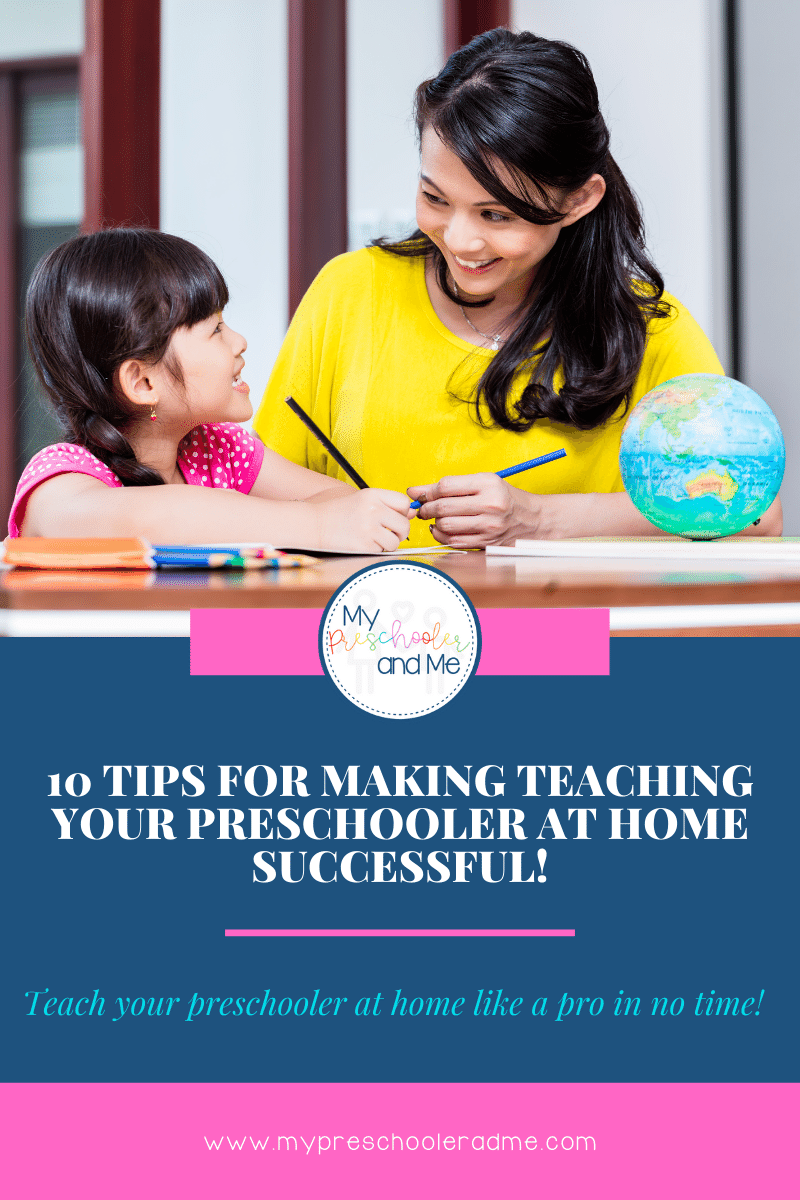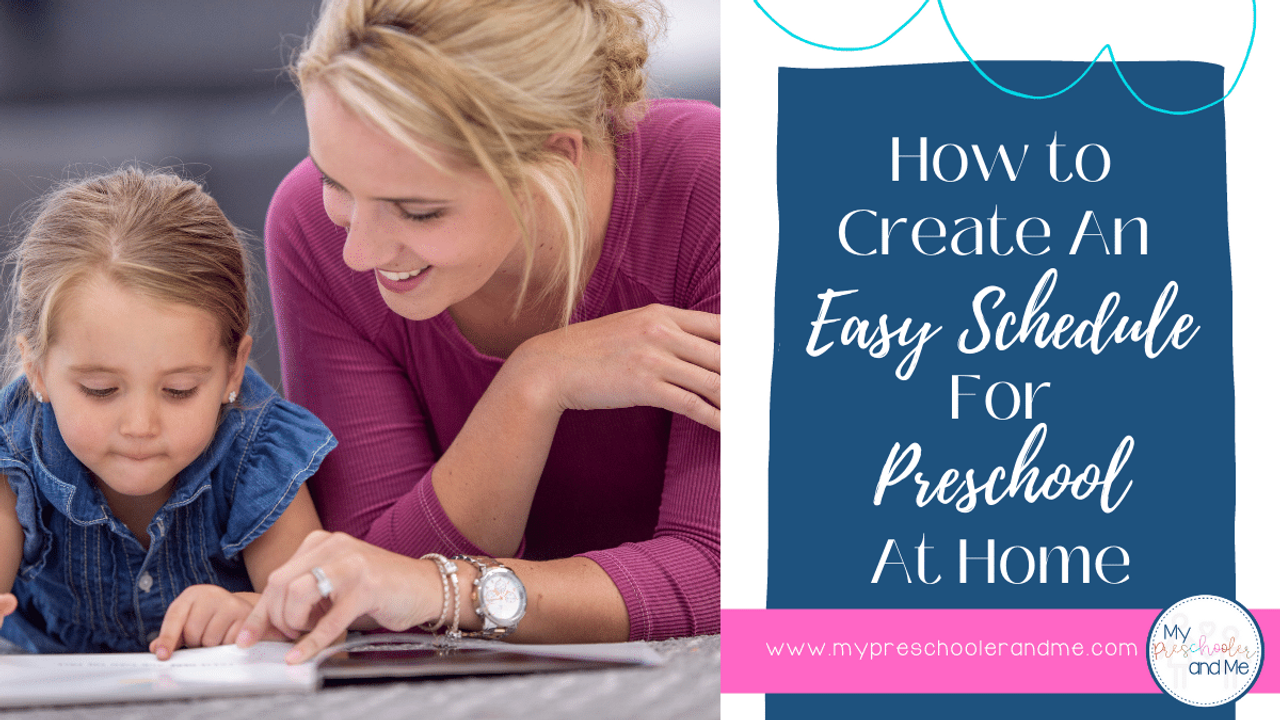
How to Create and Establish an Easy Schedule for Preschool at Home
If you do preschool at home (or are just getting started), one of the first things you need to think about is establishing your schedule for preschool at home. Having a well-established schedule for preschool saves you time, helps with management, makes planning easier, and provides a framework for creating routines.
Your preschooler will thrive off of a predictable routine because routines help children feel safe and secure. Routines and procedures also give your child a sense of ownership and independence.
When I was still in the classroom, all of our preschool routines and procedures revolved around our daily schedule. My assistant and I had eighteen 3 and 4-year-olds in our class. As you can imagine, things could get pretty chaotic.
We had to have a way to lead all of our students in the same direction. The answer? A well-established schedule with well-established routines and transitions.
Don’t be intimidated by the thought of establishing a school routine at home. Think of it as your current mealtime or bedtime routine. The routine is there to help make your life easier, and help your child know what is expected.
If you are looking for more tips on how to establish routines with your child at home, you can download a free copy of my workbook called 10 Tips for Making Teaching Your Preschooler at Home Successful.
What Makes a High Quality Preschool Program Schedule?
There are a few major components that are found within the framework of most high quality preschool programs. We can use these examples when trying to establish an at-home preschool schedule.
- Free Play: Often called centers. This is the time of day that preschoolers choose which area of the classroom they would like to play. Examples of centers are block center, dramatic play, art, and library. Check out these 5 tips for how to rotate toys and create an engaging space.
- Math: This can be a small group, or whole group, or individual activity. During this time, preschoolers practice skills such as counting, sorting, and number recognition with adult supervision.
- Literacy: This is similar to math time. Students may practice identifying letters, learning letter sounds, or practice rhyming. It also includes looking at books and listening to stories be read aloud.
- Circle Time: Circle time is a whole group session. It usually happens at the beginning of the day. It can look different every day, but mostly involves a mini-lesson that goes along with the theme for the week, singing songs/saying rhymes together, or going over the schedule for the day.
- Gross Motor: This is similar to free play but it happens outdoors. Children may practice things like throwing and catching, hopping, skipping, and balancing on a balance beam.
- STEM: STEM activities at this age involve observation, asking questions, and exploring to gain understanding.
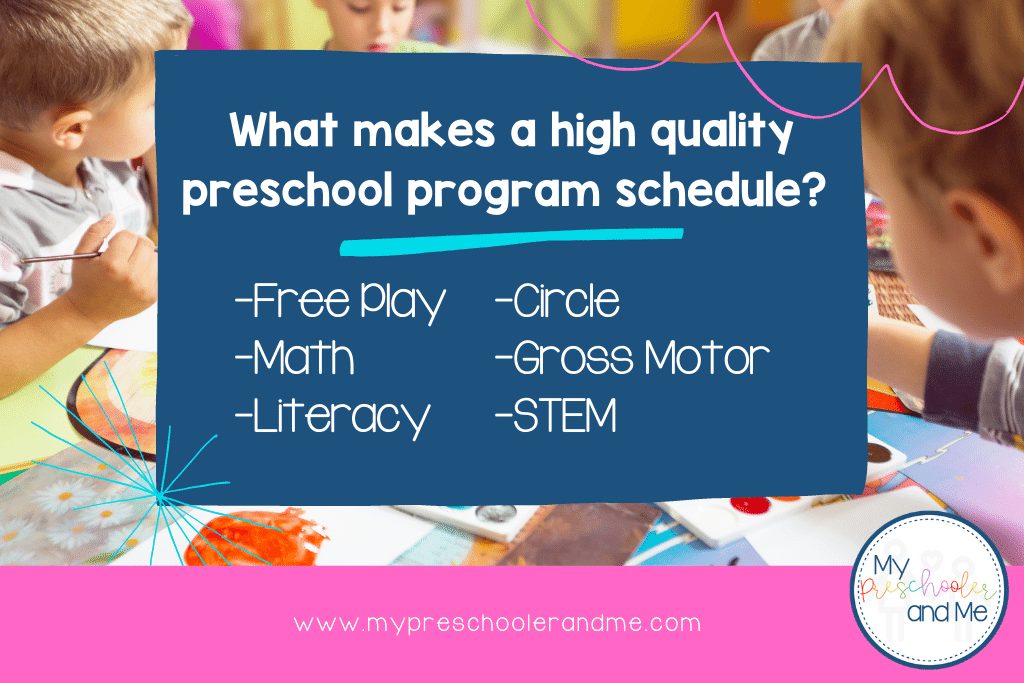
Keep in mind that preschool scheduling at home will be very different from scheduling in a classroom setting. In the classroom, teachers are working with a large number of children.
Teachers also have to meet specific allotments of time for each component to be compliant with the recommendations for early childhood education.
At home, you have the freedom and flexibility to do what works best for your family. Your daily schedule probably won’t contain each of these components in a formal setting like school.
You might not have a scheduled gross motor time each day, but as long as your child has the opportunity to be outdoors whenever possible, you can check that component off the list.
How to Make a Schedule for Your Child for at Home Preschool
As you are trying to determine the ideal schedule for teaching your preschooler at home, keep in mind that preschool children do not need lengthy windows of time per sitting. Just 10-15 minutes of focused learning per day is all you need to set aside to teach your preschool child at home.
At this age, children learn mostly through play. The rest of the day should be dedicated to engaging with your preschooler in meaningful play.
Meaningful play occurs when adults interact with a child as he or she is playing. The adult has a specific goal in mind to teach or model for the child as play continues.
It also involves providing children with specific materials that encourage them to ask questions, take part in pretend play, and solve problems together.
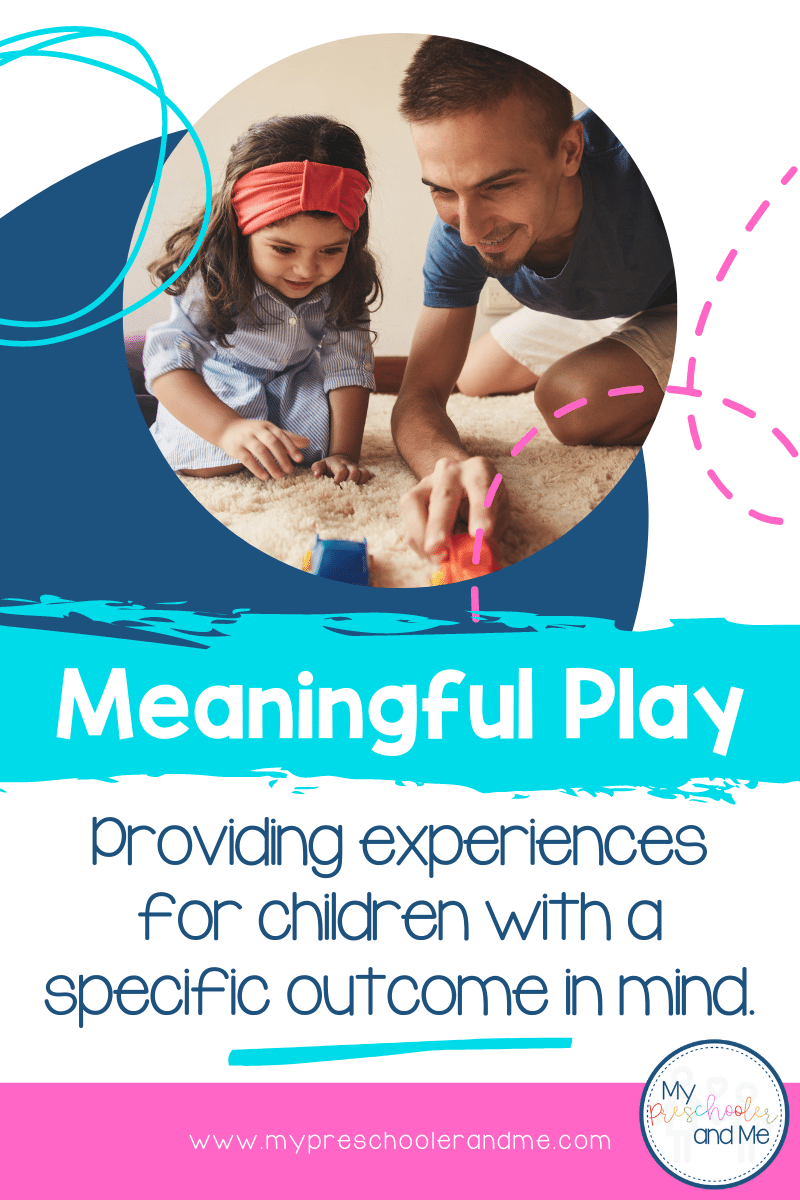
Meaningful play should happen in a natural situation. Sit down with your child and have a tea party. During the tea party, model conversation, manners, and how to prepare the tea.
Build a castle out of Legos together. Talk to your child as you are building. Use mathematical terms like length and height to describe your castle. Both of these activities are examples of meaningful play.
I’m sure some of you reading this are thinking that 10-15 minutes is a very short teaching session. If you desire to have a longer period of time for teaching, I suggest working up to that.
Start with 10 minutes the first day. Slowly increase the time by a couple of minutes each day until you reach the desired allotment of time. This may take a few weeks to do but stick with it. Stop increasing the time once you feel your child is struggling to pay attention the entire time.
Keep in mind that preschoolers have short attention spans. If you choose to have a longer teaching session, be prepared to have multiple activities ready.
Try to pick some activities that involve movement or music. Fingerplays are always a great option, too. This will help your child focus better throughout the lesson.
If you'd like some ideas on how to keep you preschooler engaged in learning math, check out these 5 tips for increasing student engagement with the use of games.
Establishing Your Schedule Using Preschool Routines and Transitions
For optimal learning, think about when your child is at his or her best. For most children, this means first thing in the morning.
At this point, they are well-rested and ready for their day to begin. Consider forming your preschool routine around the start of each day.
As mentioned earlier, preschoolers thrive off of a well-established routine. Routines make kids feel safe and also give children a sense of independence. You should strive to establish a school routine at home for these reasons (and many more).
When I was a preschool teacher, I was well known amongst my colleagues and administrators for my classroom management. They were so impressed by my ability as a new teacher to maintain control of my preschool classroom.
When asked what my secret to successful classroom management was, my answer was always “establish a routine for everything.”
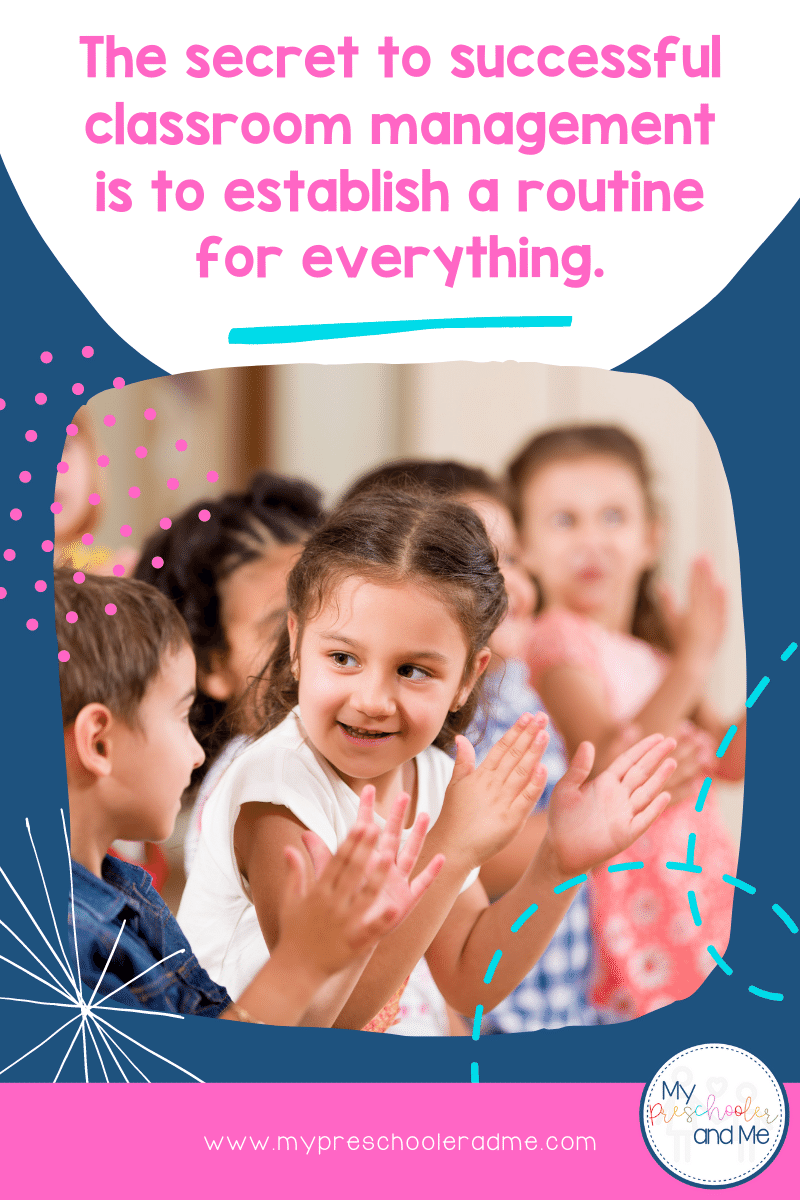
From the very first day of school, my teaching assistant and I worked tirelessly to teach our preschoolers the desired routines. It took several weeks (sometimes months) and lots of hard work, but eventually our students knew exactly what we expected.
We didn’t act as dictators but instead as facilitators of the room. As a result, our preschoolers felt safe, secure, and independent.
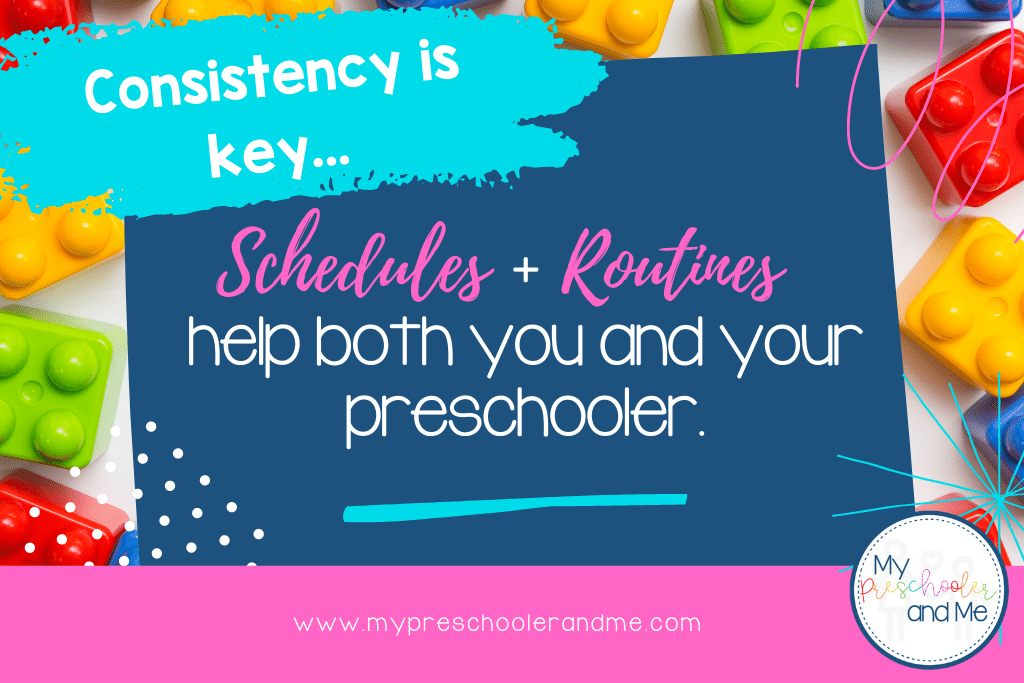
Schedules and routines are there to help both you and your child. Routines keep you from having to repeat yourself over and over again.
This saves you lots of valuable time in the long run. Your child will grow to appreciate the school routine and will actually look forward to that part of his or her day.
As you attempt to establish your teaching schedule with your child, keep in mind that consistency is key. Pick a cue that tells your child it’s time for school.
It could be something as simple as starting school everyday when breakfast ends. When you set the box of school supplies on the kitchen table, that could also serve as a cue that it’s time for school. Whatever it is that you choose, be consistent.
Using Transitions to Help With School Routines
Think about how you want your child to transition into his or her school time. Do you want him or her to clean up the toys before school begins? Should your child get dressed and brush teeth before school, too?
Whatever you choose, make sure it happens every day before the start of school so it will eventually become a natural transition into school.
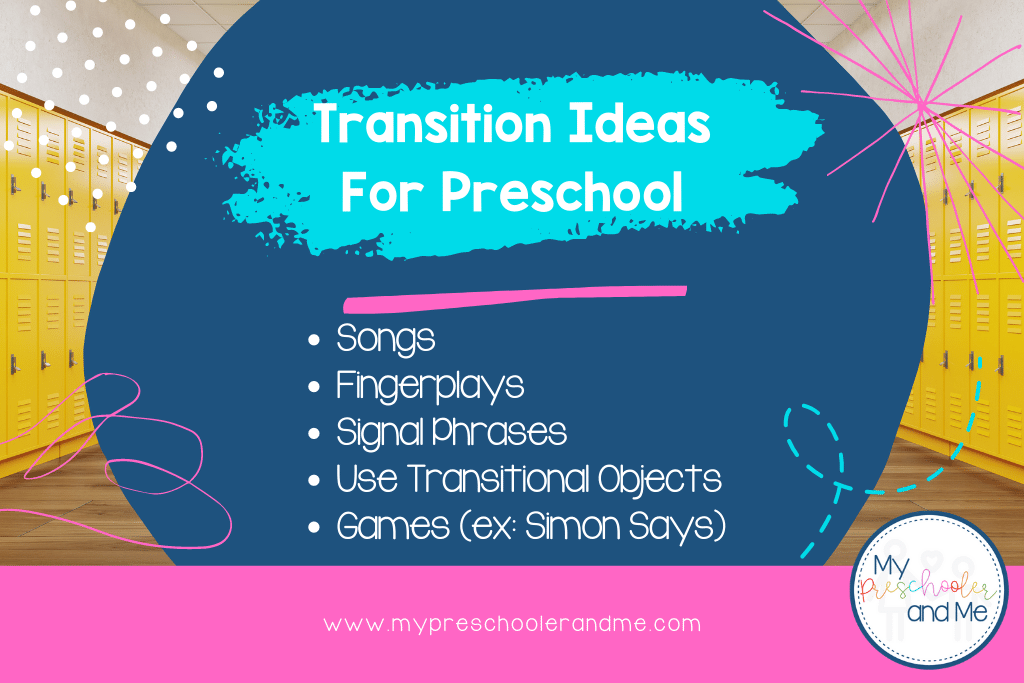
There are many ways to make transitions easy. Children naturally love music. Picking a favorite song to play at the same time each day is a great way to transition your child into his or her school time.
I used to play the same song each time I wanted my students to begin cleaning up after centers. I didn't even have to announce when clean up time started. Once the children heard the song begin, they would automatically start cleaning up.
As long as you have a plan for tackling transitions, you can eliminate chaotic situations throughout your school day at home.
Using Picture Schedule Cards for Preschool
Each morning when she gets up, my four-year-old daughter says to me, “Mommy, what are we going to do today.” We then spend time snuggling on the couch while talking about our plans for the day.
A great way to help curious preschoolers understand how their day is going to be structured is to use a picture schedule.
A picture schedule is a visual representation of the events that will take place throughout the day. In my classroom, I had photos that represented the major events of our day such as centers, outdoor time, and naptime. I attached Velcro dots to the back of each picture so that they could easily be rearranged.
Each morning during Circle Time, we would talk about our schedule. We would put the cards in order so the students would have a visual to follow throughout the day.
As we transitioned to another part of our day, I’d remove a pictures from our schedule so it showed the activity that we were about to complete. My assistant and I often saw our preschoolers checking the schedule to see what came next in our day.
How to Make a Picture Schedule For Your Preschooler
It's quite simple to create a picture schedule. You will need a clothespin, Velcro dots, scissors, poster board, and photographs of major events that happen throughout your day.
You can take your own pictures, search Google images for photos, or download my set of Photo Schedule Cards specifically designed for preschool at home here.
- Print the pictures you selected. If possible, print them on cardstock paper for durability. If you don’t have cardstock paper, you can mount them on heavier paper for added strength. If you have access to a laminator, it is best to laminate the pictures, but this is not a requirement.
- Determine how many events you want to show on your picture schedule. In my classroom, we had eight Velcro dot spots on our picture schedule. We didn’t always use all of the slots, but we wanted to make sure we had room to add in special events that weren’t typically part of our daily schedule. For the most part, the general framework of our schedule consisted of circle time, centers, outside time, lunch, naptime, and dismissal.
- Once you’ve figured out how many slots you want on your picture schedule, attach the Velcro dots to the poster board in a vertical or horizontal line. Be sure to account for the size of your photographs so the pictures won’t overlap when placed on the schedule.
You can make your picture schedule look as fancy or keep it as simple as you’d like. Have fun with this! Let your creativity shine!
Picture Schedule Examples
Here are some examples of different layouts you could use for your picture schedule.
- This first picture schedule is from Pocket of Preschool. It is an example from a preschool classroom. View the photo here.
- This photo shows you different variations of ways in which you could display your home picture schedule for your child. It comes from teachingmama.org. View the photo here.
- This is a free visual schedule from The Primary Parade. It is geared towards preschool at home. You can view it here or download the cards here.
The Importance of Creating a Routine for Preschool at Home
You should be SO proud of yourself for taking the time to learn how to create and establish an easy schedule for preschool at home. Once you have a schedule that works for your family, and you take time to build out the routines involved, you are on your way to teaching your preschooler like a pro!
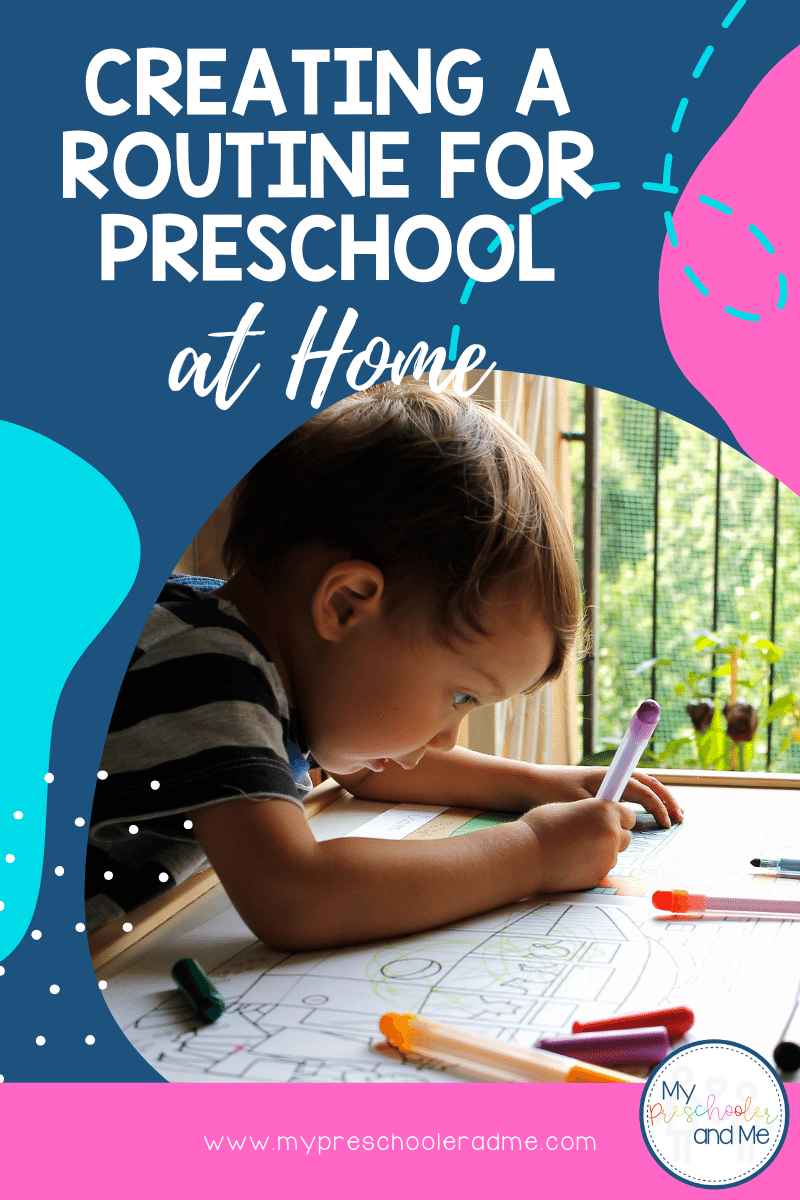
Don’t be afraid to revisit a routine if it isn’t going exactly as you had imagined. Reteach the process and practice, practice, practice.
Sometimes it takes a long time to establish a good routine. The extra work is worth it because you will find that it helps your day go smoother in the long run. Take action now and work on creating your schedule for preschool at home today!
Before you go, I’d like to offer you a copy of my free workbook called 10 Tips for Making Teaching Your Preschooler at Home Successful. You’ll be on your way to teaching your preschooler like a pro in no time! Download your copy by clicking here.
Happy Teaching!
*Are you interested in learning how to blog? Check out https://kaysemorris.com/7-helpful-tips-on-how-to-blog/ for helpful tips.
